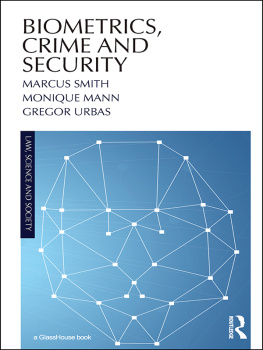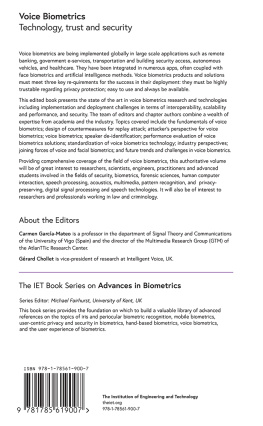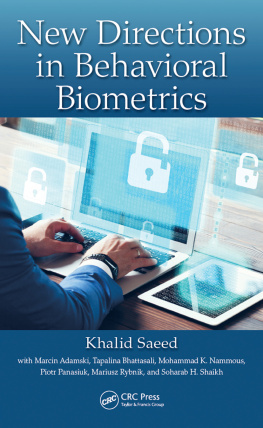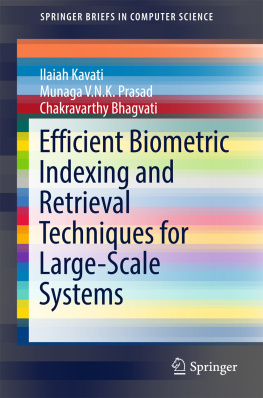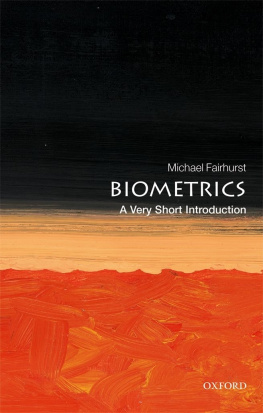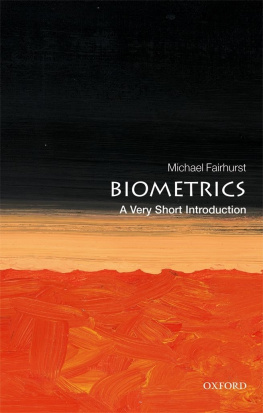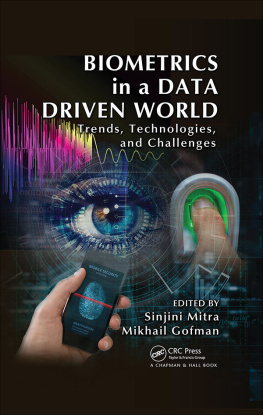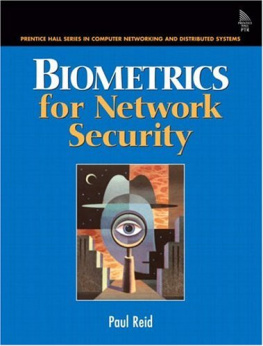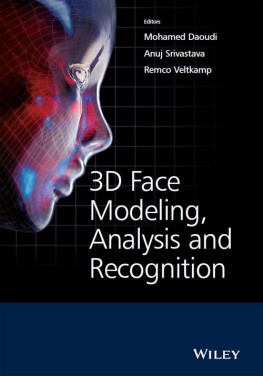BIOMETRICS, CRIME AND SECURITY
This book addresses the use of biometrics including fingerprint identification, DNA identification and facial recognition in the criminal justice system: balancing the need to ensure society is protected from harms, such as crime and terrorism, while also preserving individual rights. It offers a comprehensive discussion of biometric identification that includes a consideration of: basic scientific principles, their historical development, the perspectives of political philosophy, critical security and surveillance studies; but especially the relevant law, policy and regulatory issues. Developments in key jurisdictions where the technology has been implemented, including the United Kingdom, United States, Europe and Australia, are examined. This includes case studies relating to the implementation of new technology, policy, legislation, court judgments, and where available, empirical evaluations of the use of biometrics in criminal justice systems. Examples from non-western areas of the world are also considered. Accessibly written, this book will be of interest to undergraduate, postgraduate and research students, academic researchers, as well as professionals in government, security, legal and private sectors.
Marcus Smith, Adjunct Professor of Law, University of Canberra; Senior Lecturer in Law, Charles Sturt University
Monique Mann, Vice Chancellors Research Fellow in Regulation of Technology, Faculty of Law, Queensland University of Technology
Gregor Urbas, Associate Professor of Law, Faculty of Business, Government and Law, University of Canberra
LAW, SCIENCE AND SOCIETY
General editor
John Paterson
University of Aberdeen, UK
Julian Webb
University of Melbourne, Australia
Laws role has often been understood as one of implementing political decisions concerning the relationship between science and society. Increasingly, however, as our understanding of the complex dynamic between law, science and society deepens, this instrumental characterisation is seen to be inadequate, but as yet we have only a limited conception of what might take its place. If progress is to be made in our legal and scientific understanding of the problems society faces, then there needs to be space for innovative and radical thinking about law and science. Law, Science and Society is intended to provide that space.
The overarching aim of the series is to support the publication of new andgroundbreaking empirical or theoretical contributions that will advance understanding between the disciplines of law, and the social, pure and applied sciences. General topics relevant to the series include studies of:
law and the international trade in science and technology;
risk and the regulation of science and technology;
law, science and the environment;
the reception of scientific discourses by law and the legal process;
law, chaos and complexity;
law and the brain.
Titles in this series:
Gene Editing, Law, and the Environment
Life Beyond the Human
Edited by Irus Braverman
A Socio-Legal Study of Hacking
Breaking and Remaking Law and Technology
Michael Dizon
Biometrics, Crime and Security
Marcus Smith, Monique Mann and Gregor Urbas
BIOMETRICS, CRIME AND SECURITY
Marcus Smith, Monique Mann and Gregor Urbas

First published 2018
by Routledge
2 Park Square, Milton Park, Abingdon, Oxon OX14 4RN
and by Routledge
711 Third Avenue, New York, NY 10017
Routledge is an imprint of the Taylor & Francis Group, an informa business
2018 Marcus Smith, Monique Mann and Gregor Urbas
The right of Marcus Smith, Monique Mann and Gregor Urbas to be identified as authors of this work has been asserted by them in accordance with sections 77 and 78 of the Copyright, Designs and Patents Act 1988.
All rights reserved. No part of this book may be reprinted or reproduced or utilised in any form or by any electronic, mechanical, or other means, now known or hereafter invented, including photocopying and recording, or in any information storage or retrieval system, without permission in writing from the publishers.
Trademark notice: Product or corporate names may be trademarks or registered trademarks, and are used only for identification and explanation without intent to infringe.
British Library Cataloguing-in-Publication Data
A catalogue record for this book is available from the British Library
Library of Congress Cataloging-in-Publication Data
Names: Smith, Marcus, (Law teacher), author. | Mann, Monique, author. | Urbas, Gregor, author.
Title: Biometrics, crime and security / Marcus Smith, Monique Mann, Gregor Urbas.
Description: New York : Routledge, 2018. | Series: Law, science and society | Includes bibliographical references and index.
Identifiers: LCCN 2017038452 | ISBN 9781138742802 (hbk) | ISBN 9780815378068 (pbk)
Subjects: LCSH: Biometric identification-Law and legislation. | Evidence, Criminal. | Criminals-Identification. | Forensic sciences.
Classification: LCC K5479 .S65 2018 | DDC 363.25/8-dc23
LC record available at https://lccn.loc.gov/2017038452
A Glasshouse book
ISBN: 978-1-138-74280-2 (hbk)
ISBN: 978-0-8153-7806-8 (pbk)
ISBN: 978-1-315-18205-6 (ebk)
Figures
Tables
Introduction
The continuing advancement of scientific technology is the key factor in the vast improvements to living standards in western countries in the twentieth and twenty-first centuries. The contribution of scientific technology to crime prevention, investigation and other aspects of the criminal justice system, such as trials, is significant.
One of the earliest means of identifying individuals in the criminal justice system was fingerprinting, a technique first developed in the late eighteenth century to identify individuals based on the unique patterns on the fingertips. This technique is still used in the twenty-first century; however, it has now been digitised. Other examples of technology that has been developed to assist with criminal investigation include closed circuit television (CCTV) and deoxyribonucleic acid (DNA) identification, among others. The applications of technology in policing continue to rapidly expand into a central aspect of police work. This includes new developments relating to police information systems, big data analytics and predictive policing. All of these techniques have made very significant contributions to the investigation and prosecution of crime, but must be considered in the context of potential inaccuracy, due process implications and impacts on individual rights. Since the turn of the century, advancements in physics and information technology have provided the basis for a range of powerful identification techniques that continue to develop.
This text provides coverage and analysis of the major forms of biometrics that are currently used throughout the criminal justice sector, and, to some extent, the national security and commercial sectors. Biometrics that are presently being developed or used on a small scale, but are likely to become widely adopted in the future are also considered. The major forms of biometrics used in the criminal justice sector, including fingerprints, DNA and facial recognition will be discussed; along with emerging biometric technologies including ocular biometrics such as retina and iris recognition, voice recognition, vascular pattern recognition, keyboard dynamics, cognitive biometrics and gait analysis.

